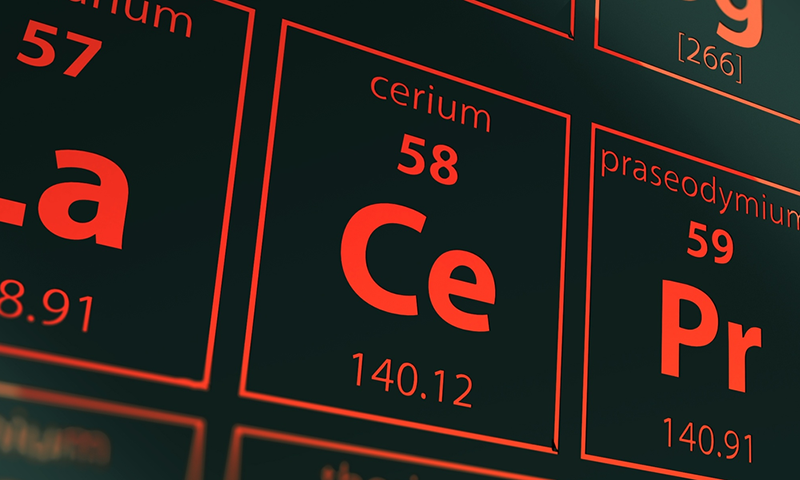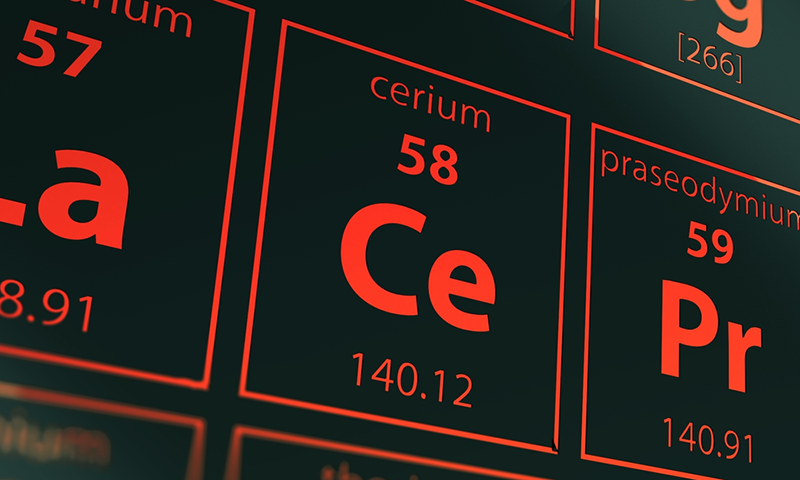Heavy Element Quandary in Stars Worsened by New Nuclear Data
Astrophysicists have a cerium problem—models predict that certain stars should contain much less of this heavy element than astrophysical observations find. Recently performed experiments at CERN’s neutron time-of-flight (n_TOF) facility have widened the gap between theory and observations by 20% [1]. The researchers behind the work say that the results highlight the need for high-accuracy measurements of the nuclear properties of atoms, as well as for updated nucleosynthesis models of element formation. “Our experiment made the problem worse,” says Simone Amaducci of the INFN Laboratori Nationali del Sud, Italy. “That was unexpected, but it’s also interesting because it means there is something we don’t understand about how nucleosynthesis happens.”
Most of the Universe’s heavier elements form in stars via one of the so-called neutron-capture processes, in which an atomic nucleus absorbs one or more neutrons. In the slow neutron-capture process, or “s process,” the absorptions are spread out in time. As such, each absorption event results in either a stable nucleus with the same number of protons but one additional neutron or an unstable nucleus, which then radioactively decays to produce the nucleus of the next element in the periodic table—the one with one additional proton.
Using currently available models of the s process, researchers have correctly predicted the abundances of elements as heavy as barium (56 protons), lanthanum (57 protons), praseodymium (59 protons), and neodymium (60 protons) in stars that are known to be enriched via the s process. But the models appear to break down for cerium (58 protons), as the abundance predictions for this element in some low-mass, low-metallicity globular cluster stars have disagreed by up to 30% with observations. “This discrepancy is very strange, as the theory works for the neighboring elements,” says Sergio Cristallo, a team member who works on problems related to neutron capture at the National Institute of Astrophysics in Italy. “There is nothing in the models that should cause such a discrepancy just for one element.”
Cerium has another intriguing property—it can form a so-called magic-number nucleus. Most of the Universe’s cerium (89%) exists as cerium-140, an isotope of the element that contains 58 protons and a magic number of 82 neutrons. Magic-number nuclei are particularly stable and so often exist in higher abundances than other isotopes of the same element or of neighboring elements in the periodic table.
Like other magic-number nuclei, the high stability of cerium-140 arises from its low neutron-capture cross section, which is the probability that a nucleus of the isotope will absorb an incoming neutron. It is also the parameter measured in the new experiments at CERN, which involved bombarding a cerium-oxide sample with a high-energy neutron beam and then measuring the products of that interaction. The capture of a neutron by the cerium-140 in the sample produced cerium-141, an unstable isotope. The subsequent decay of cerium-141 emitted a cascade of gamma rays, which were detected when they interacted with a liquid scintillator. These detections were then used to determine the neutron-capture cross section of the original cerium-140.
Analysis of the data indicates that the neutron-capture cross section is 40% higher than measured in previous experiments, which had lower accuracy. A higher cross section makes it more likely cerium-140 will capture an incoming neutron and less likely that it will stay in its cerium-140 form. That in turn leads to a prediction of a lower abundance of cerium-140 than before, Amaducci says. The higher cross section also has implications for the abundances of the nuclei that form further along in the s-process chain. With cerium-140 being more likely to capture a neutron and form a heavier nucleus, the s process can continue faster, creating a higher abundance of heavier nuclei, Amaducci says.
The mismatch between the cerium-140 abundance predicted by theory and that measured in observations of the low-metallicity stars the team considered suggests that a process other than the s process might also produce this nucleus in those stars. Amaducci, Cristallo, and another of their colleagues, Alberto Mengoni of the Italian National Agency for New Technologies, Energy, and Sustainable Economic Development (ENEA), say that one possibility is that another nucleosynthesis pathway, the so-called i process, is involved in the making of cerium. This proposed neutron-capture process bypasses some stable nuclei involved in the s process, and—if it played a big role—could change the relative abundances of the elements. “It’s a possibility,” Mengoni says. “But we don’t know whether this i process can explain the present situation.”
The team is not the only group studying the neutron-capture cross section of cerium-140. In February, using a different technique, Michael Paul of the Hebrew University of Jerusalem and his colleagues found a roughly 15% lower value of the cross section than previously measured with that technique [2]. Neither Paul nor Amaducci know the source of the discrepancy between the two new values.
To tease out exactly what is going on, the researchers all agree that more nuclear measurements need to be made. For example, Amaducci notes that there is currently no experimental data for many of the nuclei involved in the i process. “So, the inputs to the model are very uncertain,” he says. Many theory and experimental groups are exploring the i process, and Mengoni expects that the results of those studies will lead to some interesting findings. “It may be that current models of nucleosynthesis need to be tuned or new models invented,” he says. “Understanding these problems is one of the most active areas in nuclear physics.”
–Katherine Wright
Katherine Wright is the Deputy Editor of Physics Magazine.
References
- S. Amaducci et al. (n_TOF Collaboration), “Measurement of the 140Ce(n, 𝛾) cross section at n_TOF and its astrophysical implications for the chemical evolution of the Universe,” Phys. Rev. Lett. 132, 122701 (2024).
- R. N. Sahoo et al., “Stellar s-process neutron capture cross section of Ce isotopes,” Phys. Rev. C 109, 025808 (2024).





